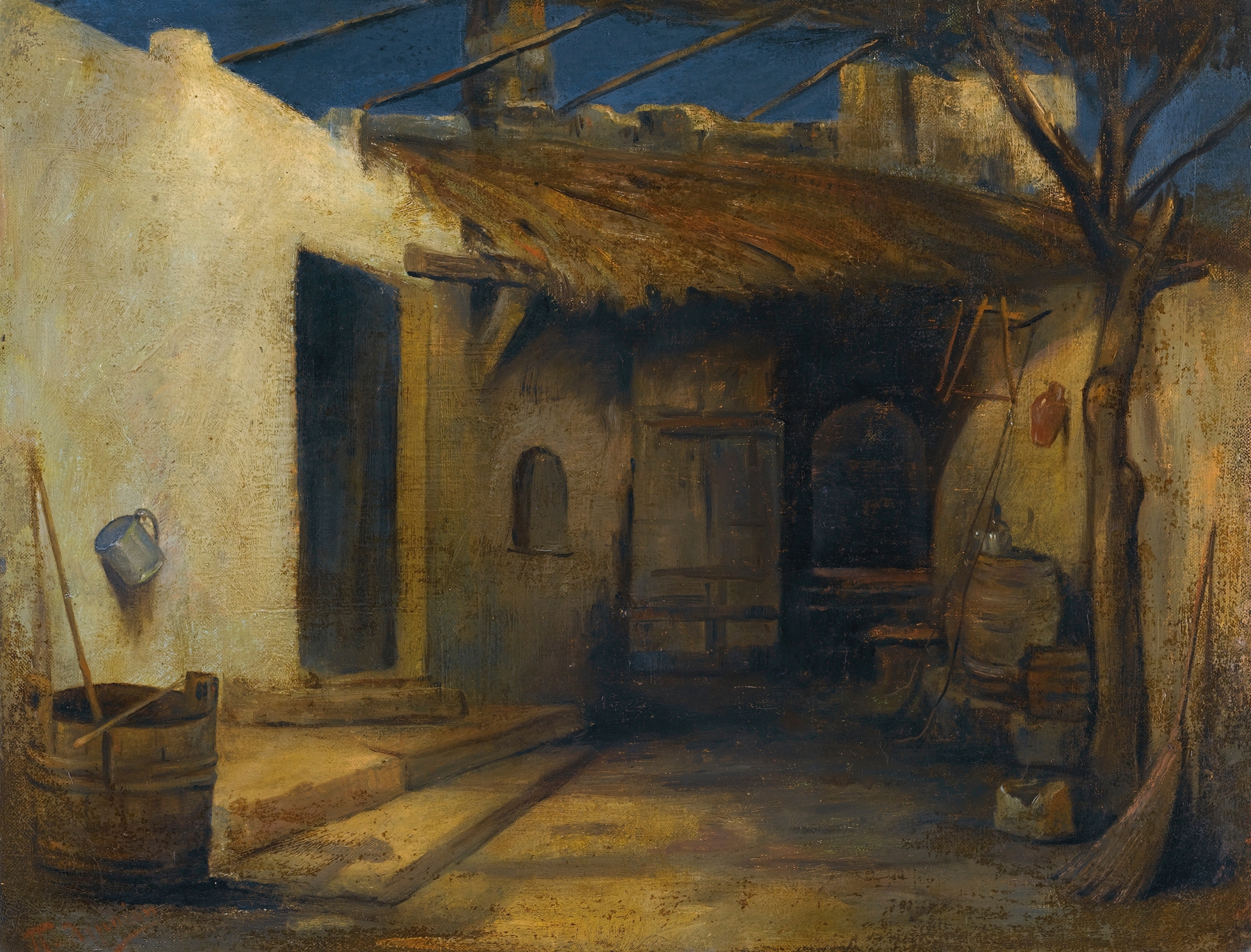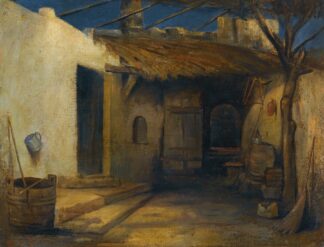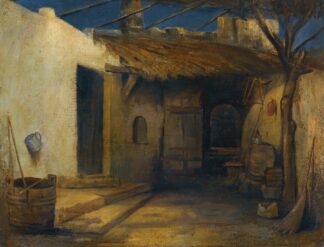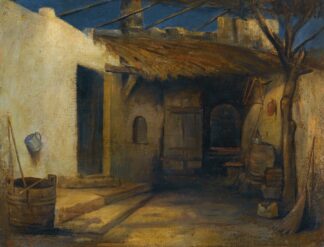Description
A Courtyard by Polychronis Lembessis printed on a Hoodie
About the Hoodie
Modern fit
It provides a more tailored look than a regular fit
Comfortable
The fabric and fit of this item are extra comfy
Tear-away tag
Easily removable tear-away tag that allows you to add a custom inside label
Premium quality
The product is made from premium, high-quality materials
Classic unisex hoodie with a front pouch pocket and matching flat drawstrings. The 100% cotton exterior makes this hoodie soft to the touch.
- 65% ring-spun cotton, 35% polyester
- Charcoal Heather is 60% ring-spun cotton, 40% polyester
- Carbon Grey is 55% ring-spun cotton, 45% polyester
- 100% cotton face
- Fabric weight: 8.5 oz./yd.² (288.2 g/m²)
- Front pouch pocket
- Self-fabric patch on the back
- Matching flat drawstrings
- 3-panel hood
- Tear-away tag
Polychronis Lembessis (1849-1913)
Polychronis Lembesis was a Greek painter, a member of the Munich School of Greek artists.
Lembesis was the son of a shepherd from the island of Salamis. He spent his childhood in Salamina, memories of which influenced his artistic work all his life. He studied painting initially at the Athens School of Fine Arts and in 1875 continued his studies at the Royal Academy of Fine Arts of Munich, thanks to a scholarship by the politician Dimitrios Voulgaris (“Tsoumpes”). In the academy he was taught by Wilhelm Lindenschmidt and Ludwig von Löfftz. In Munich he became a friend of the already known Greek painter Nicholaos Gysis.
In 1880, Lembesis returned to Athens and opened his atelier in the Thission district. Although he was a master in Landscape painting he became known more for his skills in portraiture. He began painting portraits of aristocrats and politicians of his age such as Kapsalis, Santarozas, Serpieris, Levidis and many more. He also taught painting to the children of many of his rich clients such as Stephanos Dragoumis, who later became prime minister of Greece. The Dragoumis family supported him for most of his life. He participated at many group exhibitions in Athens (Melas House 1881, Parnassos Literary Society 1885, Zappeion 1888 and 1896 etc.). In 1903 he participated at the International Exhibition of Paris; the next year his work was included in the artistic exhibition for the International Exhibition of Athens.
Lembesis died very poor and largely unknown as an artist, perhaps due to a shift in Athenian artistic taste from the Munich School to more modern artistic movements inspired from Paris. He was buried in Salamina; to cover the cost of his funeral, his relatives had to sell all of his paintings for 2 to 3 drachmas per item. In the only obituary written about him, in the Spring of 1913, Pavlos Nirvanas said: “An honest and sincere artist has died almost out of tact exactly as he did for his whole life”.
Some decades after his death his work has been reevaluated, and today Lembesis is considered one of the most important representatives of the Munich School art movement.






Reviews
There are no reviews yet.